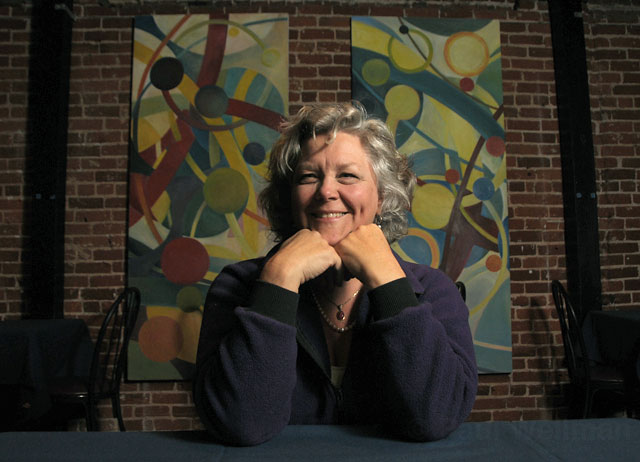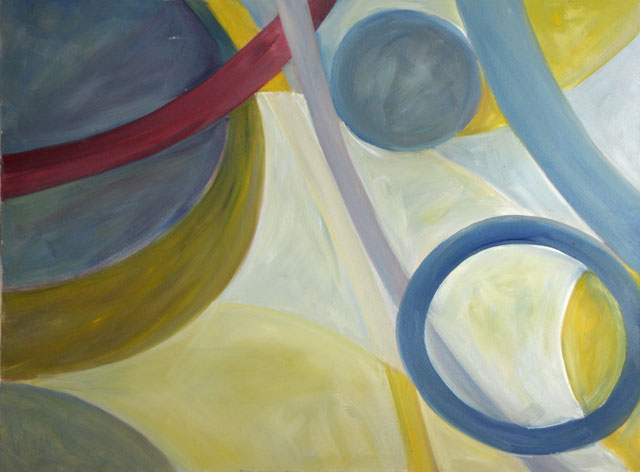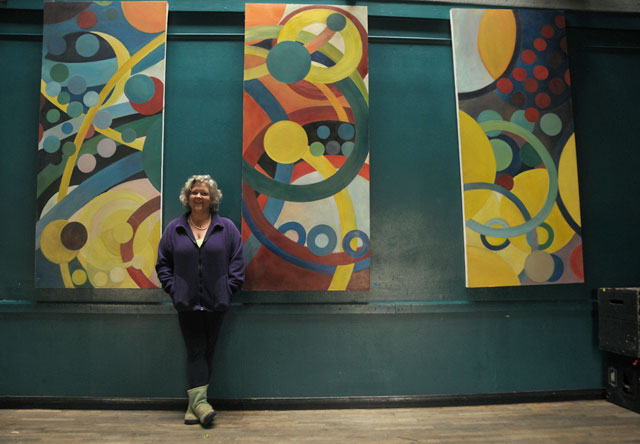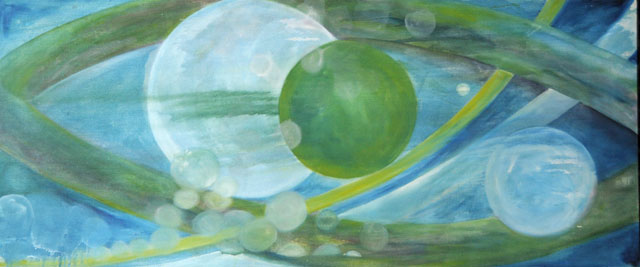A Dying Art
Huston and Huston Exhibit at SOhO to Benefit Hospice of Santa Barbara

When a loved one dies, what do you do with his or her stuff, those material possessions that will no longer be used by their now-absent owner, constant reminders of your loss? This was a dilemma faced by artist Charlene Huston when her husband Tom — also an artist — passed away last year.
It may at first glance seem like the task of an artist and the task of a mourner are at odds with each other. The artist takes intangibles — ideas, concepts, abstractions — and turns them into physical presences. The mourner on the other hand must learn to take what was once present and create meaning out of absence.
One can overlap these tasks therapeutically, however, through the creative process. For instance, Charlene took Tom’s beloved Hawaiian shirts and sewed them into a funeral shroud.

When Tom suffered a fatal stroke, however, he also left behind the much bigger endowment of his unsold paintings. Until recently, Charlene wasn’t quite sure what to do with them.
She is currently showing them at SOhO and donating 25 percent of the proceeds to Hospice of Santa Barbara, where she received counseling. Last Tuesday night she held an opening that featured the 102-year-old ukulele player Bill Tapia, of whom Tom was a big fan. (His admiration for Polynesian culture went beyond Hawaiian shirts.)
Around 70 people bought tickets to the opening, including Alice Karle and Peter Katoff, friends of Tom’s and owners of his artwork. While perusing a wall of Tom’s Radii paintings — abstract pieces dominated by large circular shapes which “emphasize the interconnected nature of the universe” according to Charlene — Karle said, “It’s wonderful to see his work displayed. Unfortunately not enough of his paintings sold when he was with us.”

Circular forms dominate many of Tom Huston’s paintings, even the more realist ones such as a large cityscape of Shanghai hanging in the back of SOhO near the kitchen. The buildings are half-covered in water and overlaid on the image in red paint are the Chinese pictographs for “sea level rise.” This painting was part of a series in which Huston imagined what it would look like if the polar ice caps melted completely and the sea level rose 23 feet. In one of his more iconic paintings — not available for sale — the palm trees of Chase Palm Park jut out of a Pacific Ocean that has overtaken Santa Barbara’s beachfront.
Much of Tom’s work was influenced both thematically and formally by his experience as a waterman. The circles in his Radii paintings were inspired by the droplets of water he would see effervescing above the surface of the water for hours on end while sailing. In fact, when he suffered the stroke that took his life, he was on his boat reading an art magazine, doing the things he loved, said Charlene. “Good for him. Bad for the rest of us,” she added.
While undergoing counseling with Hospice of Santa Barbara, Charlene attended art workshops run by Valerie Moore. In the six-week-long workshop, she made a book of rituals she’d gone through in the year after Tom’s death. “The far-out thing about the Hospice of Santa Barbara program is that it’s not a cookie-cutter process,” said Huston.

Hospice has increased its art therapy offerings since hiring Moore, a social worker certified in art therapy, about a year ago. Typically art therapy is applied to children because they have more difficulty verbalizing their emotions. Hospice features a room with arts and crafts materials just for children. The benefits of art therapy, though, are not restricted to kids.
Moore says that artistic activity helps people access the right side of their brain. “So many times people get caught up in product. Pain isn’t always pretty.”
But sometimes it can be channeled into something that is. At Hospice, aesthetics have always been at the center of the grieving process. The building itself was designed by Barry Berkus, the renowned Santa Barbara architect. And it is decorated by a series of paintings by Mary Heebner organized around the theme of lightness emerging from the dark.
“The art is intrinsically woven into what we do,” said K. C. Thompson, development manager at Hospice. Hospice holds art show fundraisers quarterly.
As for Charlene, she is still creating meaning out of Tom’s death. During the opening at SOhO, she showed a preview of a documentary she is working on called Tom Tom Tom — names are called out three times in Tibetan Buddhist prayers — and making collages out of his old clothes. She and Moore are planning a workshop for February called “The Fabric of Grief.”



